Suicide Squad: Kill the Justice League feels like something that could've been released years ago — before the pandemic, before Elden Ring or even Fortnite and right around the time loot shooters with story still felt fresh.
This was a time when your narrative pieces in an open-world setting were buttressed by side missions scattered all over a large map — except the problem is that these side missions lacked variance, so they amounted to nothing more than trigger-filled busywork, something designed to perhaps "build you up" for an inevitable epic confrontation: Shoot these things. Protect this thing. Shoot a bunch of other things, but with a time limit. Kill X amount of things, but using only a certain specific attack.
This stuff is fine as an occasional distraction, but if you are repeating this cycle for a few hours straight, no one would really blame you if you wondered, "What are we doing here?"
I feel like some of us should have seen this coming. Do y'all remember Batman: Arkham Knight, the third installment to Rocksteady's (who made this game) exceptional, chef's-kiss Batman series of games? It was legitimately great, but it would've been better if Rocksteady wasn't so insistent on spamming Batmobile-is-a-tank missions on us. I couldn't have been alone in audibly groaning whenever I had to face yet another volley of armed remote vehicles for what felt like the 25th time. It's one of the reasons I didn't replay it a lot, even when I was shut in during the peak of COVID. I didn't want to go through that crap again.
Going on this mini-rant is a bit of a bummer because Suicide Squad: Kill the Justice League deserves its flowers for the things it does mostly right. It's all of the elements you'd expect Rocksteady to be good at that made the Batman games memorable — its looks, narrative and dialogue, when they all get chances to breathe.
Here's the premise: Alien super-being Brainiac wants to terraform Earth and starts his efforts in Metropolis, corrupting the minds of key members of the Justice League: Flash, Batman, Green Lantern — and Superman. Wonder Woman, however, manages to elude this fate and has taken it upon herself to serve as a one-woman resistance to Brainiac's invading armies, her former Super Friends serving as its high-powered generals.
Enter the Suicide Squad, AKA Task Force X, a crew of talented lower-tier villains coerced with cranial bomb implants into working with A.R.G.U.S. and its morally questionable director, Amanda Waller, who has always seen superheroes (or "metahumans") as a constant threat. As the game's title suggests, Waller asks Task Force X to take down the Justice League. If they succeed, great. If they die in the process, whatever, on to the next solution.
Rocksteady has proven to be excellent at nailing the look, feel and essence of all characters in it games, and I thought they struck gold with the chemistry of the Suicide Squad's four members: Harley Quinn, King Shark, Deadshot and Captain Boomerang. The game also nails the overall Suicide Squad vibe — that this is essentially a group of jackasses who will smash, blast and stumble their way into unexpected victory. During a fight, Deadshot yells out, "Watch the back door!" to which Harley responds, "Best dirty movie I ever saw!"
However, the game also does a solid job of giving life to a world in which the Justice League has broken bad, both through its landscapes and through the corrupted members of the Justice League, who are forced to access the darkest versions of their personalities. Take Barry Allen, the Flash, normally the carefree member of the bunch, whipping out his phone and streaming to anyone viewing, "Hey Metropolis, do you like live executions?" before taking on Task Force X. Batman now kills people, as evidenced by a trail of broken bodies dangling in the city's largest bank. He also becomes the evil JL's de facto quarterback, dishing out orders or biting, dismissive insight about the opposition (that would be you) over communications.
Everyone is thrown into the wide-open shooter playground that Metropolis has become. It felt like a DC Universe theme park featuring a multitude of other characters. Lex Luthor is featured prominently, as is Lois Lane. The Penguin eventually becomes the Task Force X weapons guy. The character of Hack eventually handles attribute upgrades. All are portrayed and designed very well. I can't say enough about how well Wonder Woman comes across here; get that lady her own game. While this mass of creativity within the Metropolis map serves as both the vehicle for the squad's characters and combat abilities to shine, it also lays out the game's most annoying parts front and center.
There's nothing about overall gameplay that will take shooter veterans by surprise. Each buildable character has a variety of tailored attacks and abilities, and the button layout is sound. In addition to firearms, they have the full package of melee attacks and special heavy attacks when certain meters are built up and prompts appear at the bottom of the screen. What stands out is how each character traverses the expanse of Metropolis, with some methods feeling clunkier than others. Deadshot uses a jetpack, while King Shark takes massive leaps. Captain Boomerang has access to the Speed Force, so he tosses his boomerang some distance in front and then speed-runs to catch it. Harley Quinn swings around, attaching to a commandeered mini-drone from Batman.
Another thing to point out is the game's take on shields, countering and critical attacks, handled generally by the upper shoulder buttons on a standard controller or a trigger. Both counters and criticals involve pressing a shoulder button when an enemy is practically flashing and the command to press R1 to fire a "counter" shot appears next to them. This deals significant damage to regular enemies and serves an essential narrative purpose during boss fights. An example is that counter-shooting The Flash powers up some tech to slow him down just enough to … shoot him more. Character shields do not self-regenerate; to replenish them, one must shoot an enemy in the legs to make them vulnerable to a shield-recharging melee attack. If that sounds a touch exhaustive, wait until you have a volley of side missions that depend on the move.
As I mentioned above, the one thing that shoots Suicide Squad: Kill the Justice League in both of its proverbial feet are the way its side (and some main) missions are built upon a limited range of repetitive blast-away tasks that wear out their welcome only after a few hours. It's like an actual theme park — but with only like, five of the same types of rides scattered around the park, just painted differently and called something else. Each mission has an associated requirement, such as "only shield-regen attack will damage the enemy," or "use only countering or critical shots." There's a lot of "destroy X amount of regenerating crystals to smash this incubator, now do that three more times." Normally, I'd start ignoring this stuff, but it's one of essential ways you can level up each of your characters in attributes and weapons — so if you want to move forward, then yes, you are going to have to escort yet another vehicle along some path and obliterate X number of enemies for the third time.
I did have fun with Suicide Squad: Kill the Justice League, but I finished the story a little relieved and exhausted, and I wasn't compelled to engage in endgame stuff because it was essentially more repetitive, conditional missions. I'd had my fill by then. I enjoyed the character and personality of the game — the banter among Task Force X is truly enjoyable, so kudos to all of the voice actors involved — and also the world that was built. Action-wise, the game gave me Crackdown vibes as I hurtled around the city and dove into its chaos. Unfortunately, it also had Crackdown depth to the point where I eventually got bored and irritated. I was not irritated enough, however, that I wish I had a bomb in my head.
Score: 6.4/10
More articles about Suicide Squad: Kill the Justice League


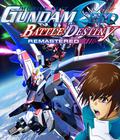
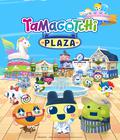
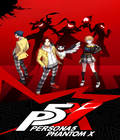
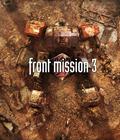

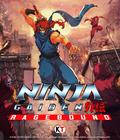
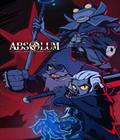


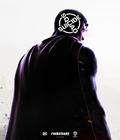 The most dangerous villains in the DC Universe have been forced to team up and take on a new mission: Kill the Justice League.
The most dangerous villains in the DC Universe have been forced to team up and take on a new mission: Kill the Justice League.














